By the end of the 19th century, a string of fortuitous events made Argentina one of the weathiest countries in the world. Agriculture, livestock, shipping and banking flourished. Wealthy Argentine ranchers and Europeans seeking a winter retreat moved to Buenos Aires. To serve their needs, a large workforce seekng jobs settled in the city as well.
I purchased a copy of Anat Meidan’s gorgeous Art Nouveau book, and If I saw nothing else, I had to see the building on the cover. I walked to the corner of Avenidas Rivadavia and Ayacucho. Here was the work of Spanish architect Rodriguez Ortega, bearing the words “No Hi Ha Somnis Impossibles” which translates from Catalan as: There Are No Impossible Dreams.
But seeing that dome up close was just a dream, wasn’t it? On this spot, no dream was impossible! A man carrying groceries came by, looked me over, and asked if I was interested in seeing the inside.
We took the elevator, an iron cage, maximum legal occupancy 2 persons, and went up to the roof. I was immersed in the impossible world of Buenos Aires.
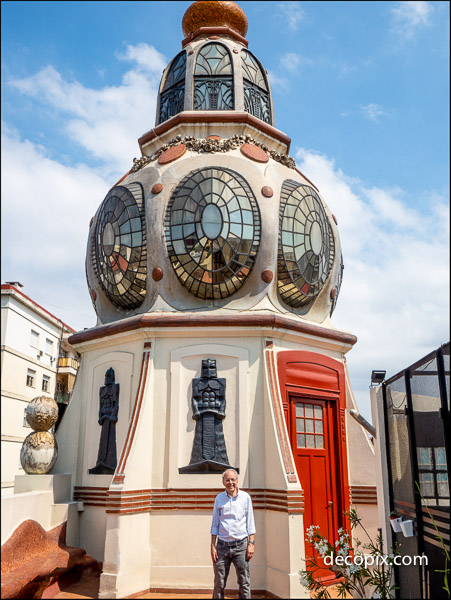
It’s an apartment, protected by knights and dragons. Not kidding.
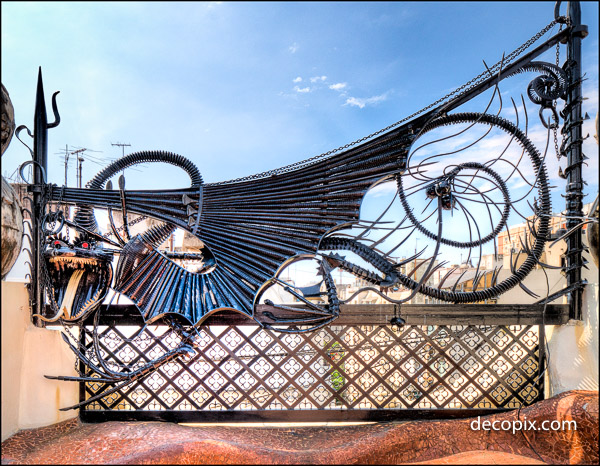
Not seen from the ground, a pair of dragons said to have been made by Gaudi, protect the building.
On the way out, we stopped in the building manager’s apartment. We were there for just a minute, but I grabbed a few shots of the floor.
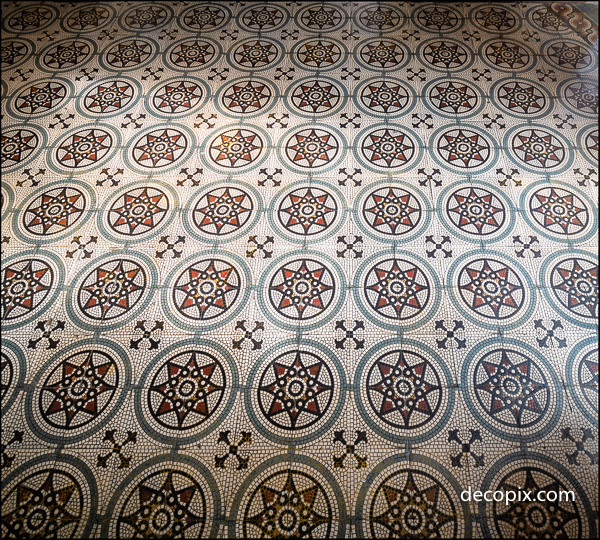
The building manager’s apartment. This is the floor in the entranceway.
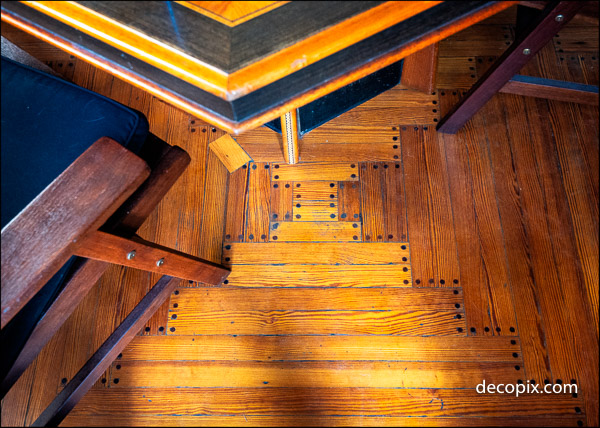
…and this is the dining room floor with what appeared to be the original table.
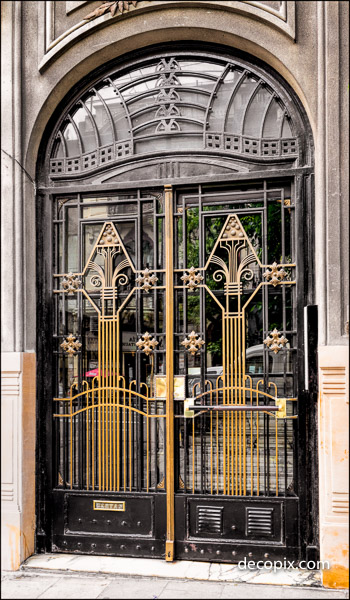
I almost forgot the doors.
How did a city in Argentina become the “Paris of South America”, with block after block of buildings that look like giant desserts?
Europeans brought fiebre de Paris–Paris fever–the money and desire to make Buenos Aires the Paris of the southern hemisphere. Thus began a building boom, and from about 1880 to 1920 this influx of wealthy Europeans created an incredible Art Nouveau legacy.
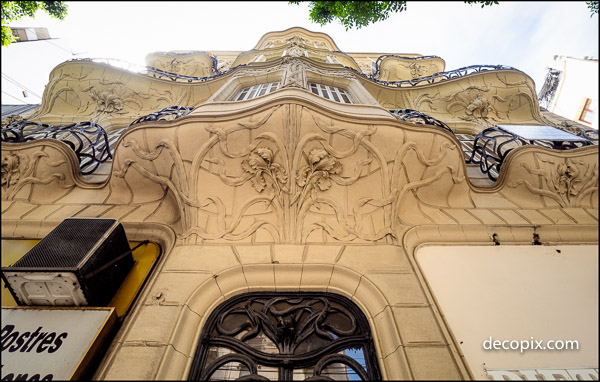
This seemed to be the only way to get around the trees.
People who could afford to maintain residences in both hemispheres wanted homes that were works of art and architects obliged. Other amenities were needed too; theaters, hotels, museums, one of the world’s great opera houses and upscale gallerias. Even parking garages were fancy.
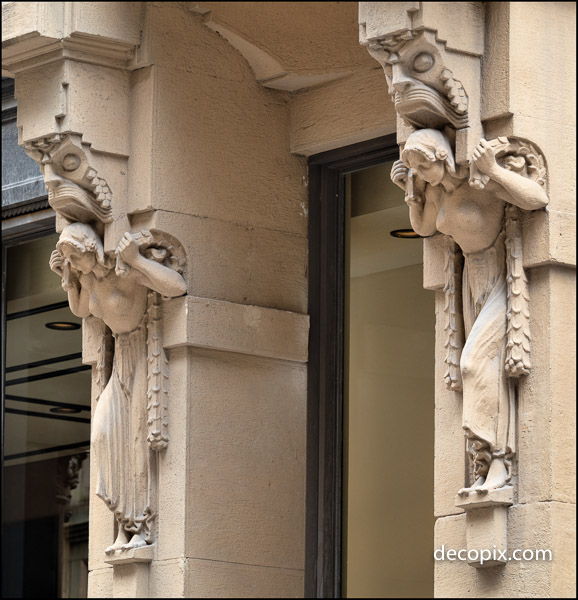
Need to do some shopping? An entrance to Galeria Guemes
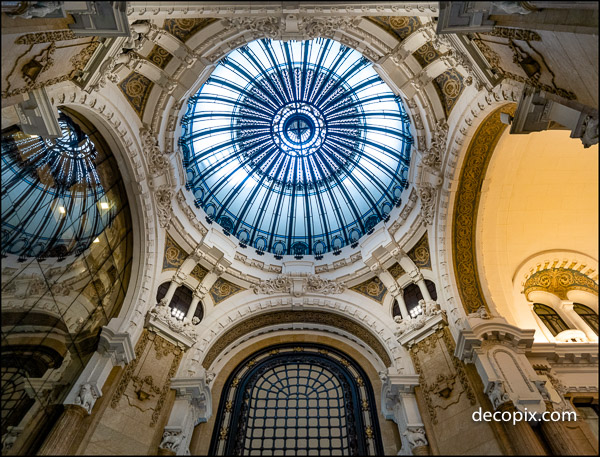
Inside Galeria Guemes. (Everybody takes this photo but it’s a deserving subject.)
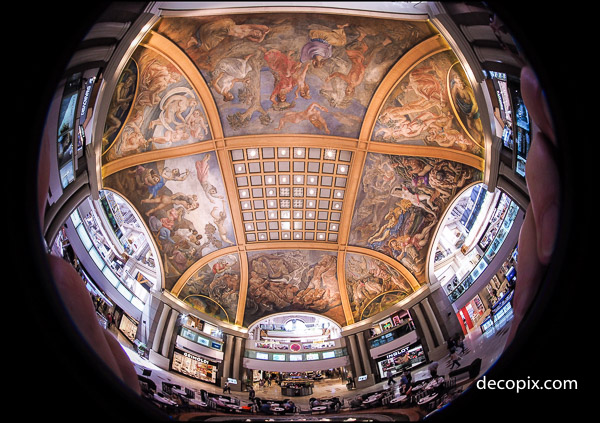
This doesn’t do it justice, but another shopping arcade, Galerias Pacifico, retains it’s domed ceilng and murals.
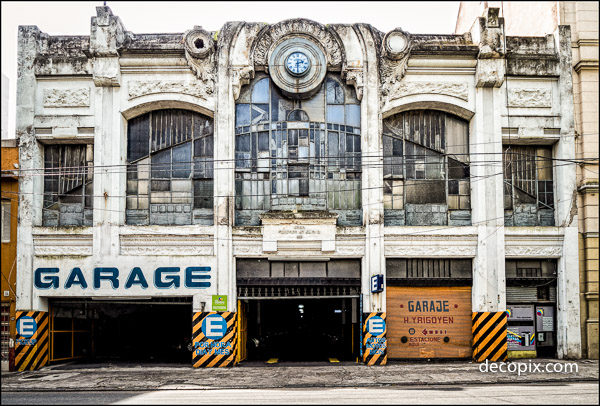
A bit rough, but how many garages have their own headlights?
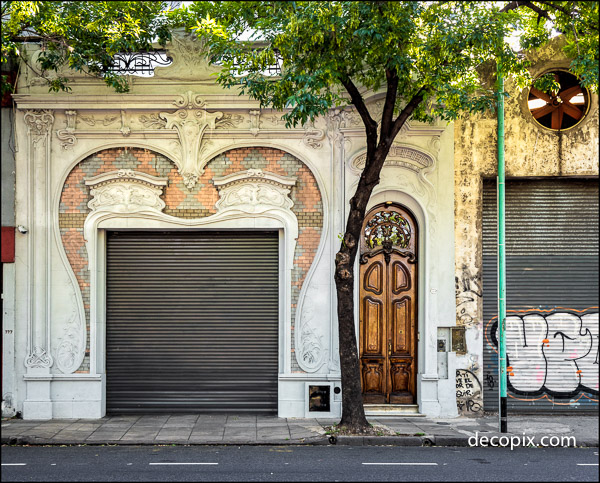
Not the original door, but still an amazing garage.
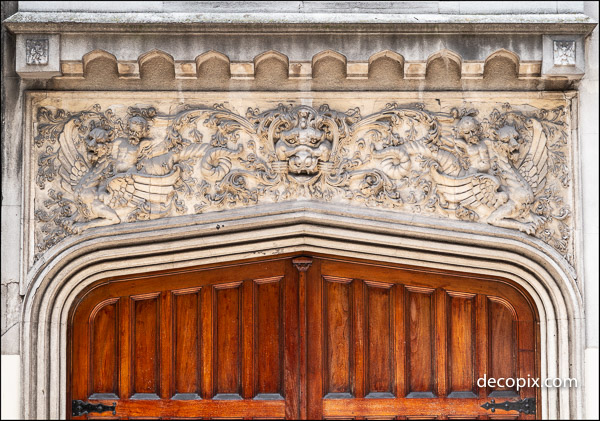
Another garage, this one with its original doors.
By 1930, the Great Depression had hit Buenos Aires hard so it would not be suprising if there was no Art Deco in Buenos Aires, but there is plenty…because nothing is impossible.
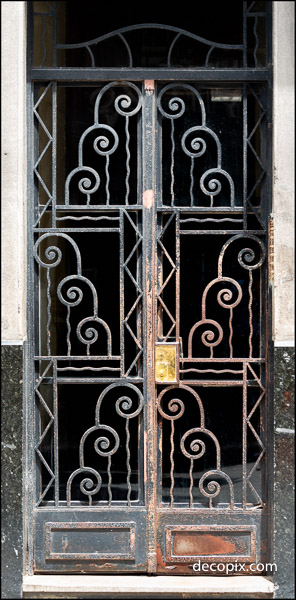
A first glimpse of Art Deco–more later.
But before I turn to Art Deco, I want to describe some unusual aspects of the city.
Towers. The older districts have so many towers. I wondered, who lives in those towers? Do they spend hours gazing at the people below?
I got in the habit of breakfast at McDonald’s. Before you ask why, fast food and large breakfasts aren’t popular in Buenos Aires and I usually skip lunch. Looking up from my Egg McMuffin, this was the view.
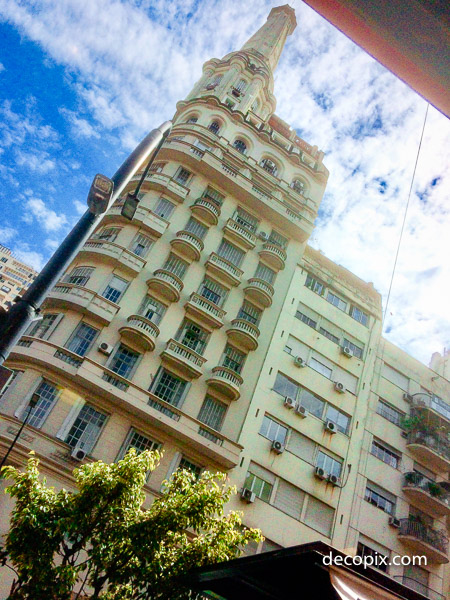
Avenidas Sante Fe and Callao
I became fascinated by this building, photographing it it day and night.
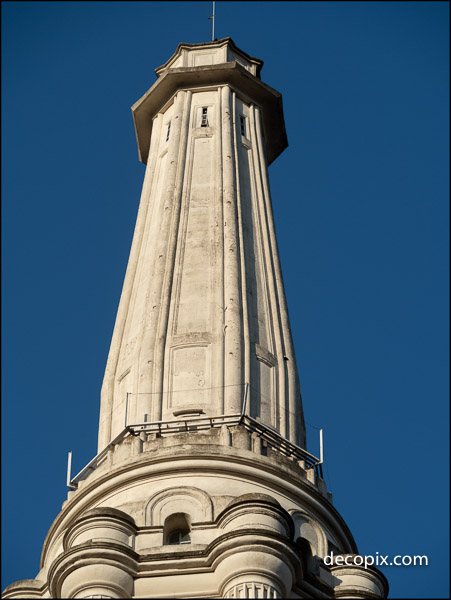
Was there a sentinel up there?
Other tops and towers:
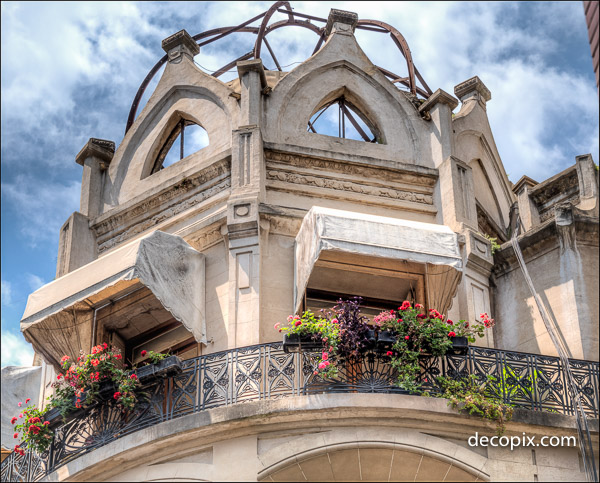
Riobamba 1175
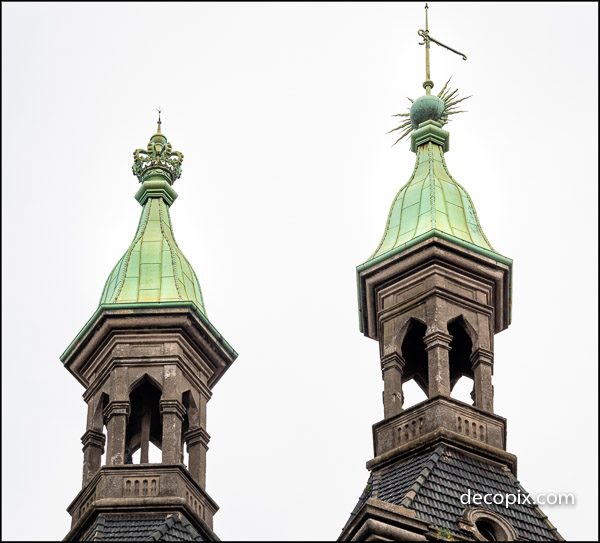
At the Otto Wulff Building, the only sun in evidence was man-made. The the sun and crown are thought to honor the Austro-Hungarian monarchy.
The rather bizarre Otto Wulff Building (1914) makes a good segue into what would become Art Deco.
Adding to the light and airy feel, there were some bits of deferred maintenance.
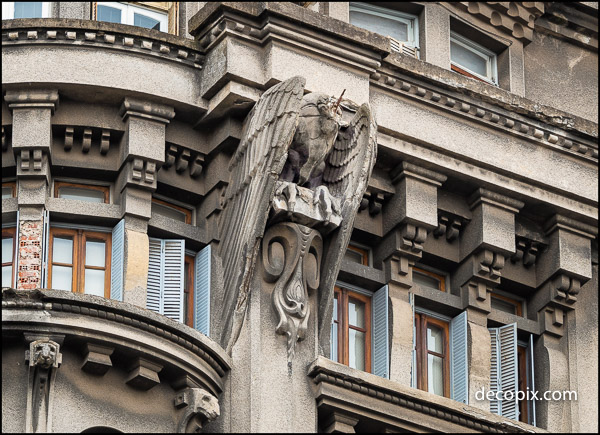
Look out below
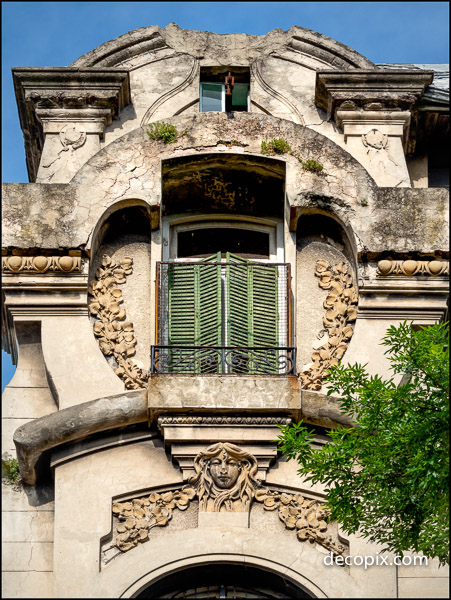
Another fantastic building that could use some love
Some transitional Art Deco and streamlining from 1913 (!)
Surveillance. Buenos Aires is not yet blanketed in security cameras but make no mistake, you are being watched!
Triangles. I’ve seen inverted triangles somewhere. German? Viennese?
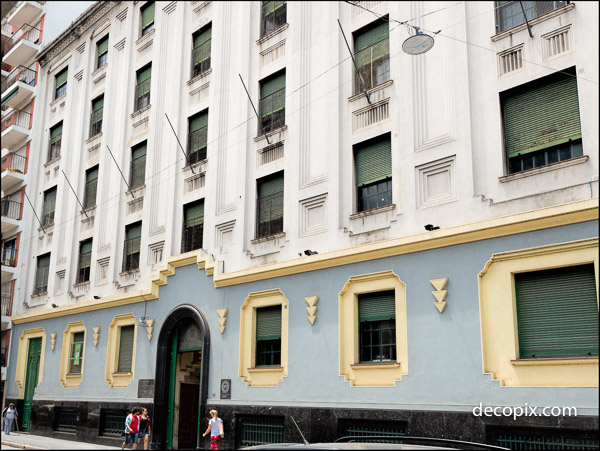
Colegio Don Bosco
Ironwork.
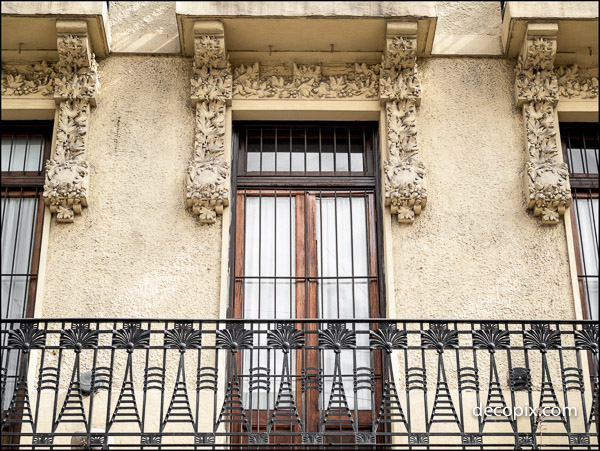
Venezuela #722
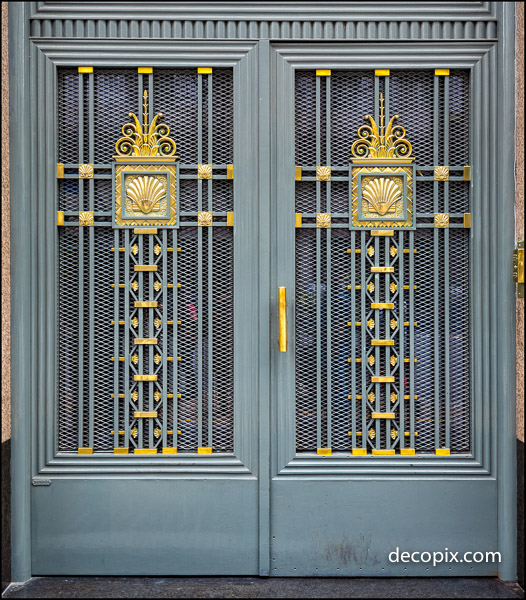
Doors to the Shell Building on a very overcast day. It has a beautiful Art Deco lobby, but you must get permission in advance.
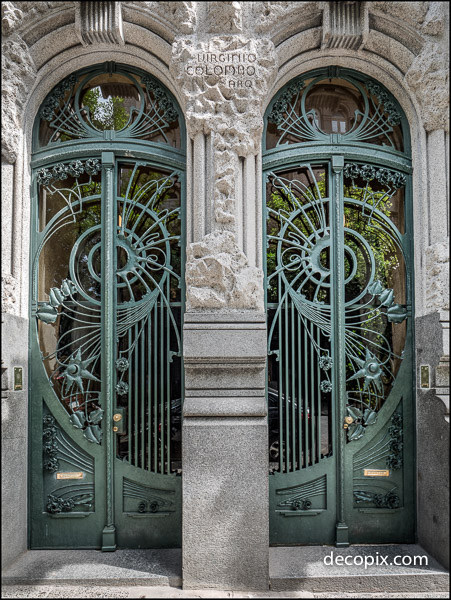
My pick for the grandest doors in Buenos Aires, #2570 Hipolito Yrigoyen Street by Virginio Colombo.
In case you were wondering what sort of house has doors like these, here’s a look at one of the upper floors.
Oddities. Gustavo, my guide, showed me more than 90 buildings in two and a half days, will have to get back to me with the details on this one. The story, if I have it correctly, is that this was the estate of a wealthy individual who did not trust guard dogs. Instead, he kept tigers. That worked out ok until, on the day of his daughter’s wedding one of the animals got loose and killed the groom, thus the statue. Ouch!
What’s wrong with this picture?
I wonder what the closets are like. I’m not quite six feet, but still….
Something else a visitor might find unusual. Argentina is famous for its beef, and people eat lots of it. The one time I stopped for lunch, this was the special:
Pizza is very popular and very good, and mine was served with a basket of bread. Shown here is one of the four slices in a luncheon pizza. I tried to give some away but there were no takers so I was forced to eat all four slices.
Palacio Borolo. The most famous building in Buenos Aires, Palacio Borolo is described as Classical Revival, Art Nouveau, Art Deco and Eclectic. I would say the only one of these that fits is eclectic, but see for yourself.
From Wikipedia: The Palacio Barolo was designed in accordance with the cosmology of Dante’s Divine Comedy, motivated by the architect’s admiration for Alighieri. There are 22 floors, divided into three “sections”. The basement and ground floor represent hell, floors 1-14 are purgatory, and 15-22 represent heaven. The building is 100 meters (330 feet) tall, one meter for each canto of the Divine Comedy.
The day’s tours were sold out, but for $7 you could go up to the bar and exchange your ticket for two drinks. Done.
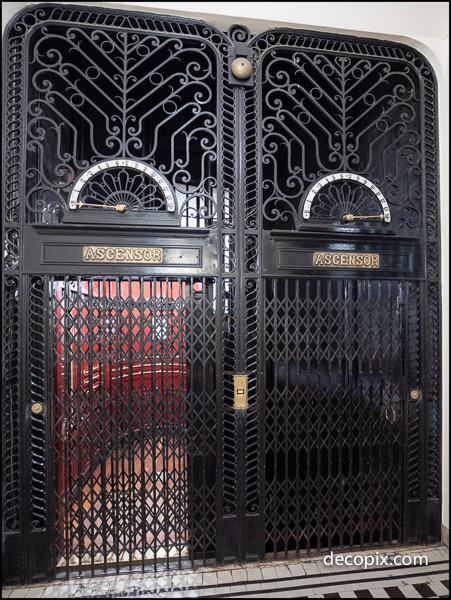
Elevators, Palacio Borolo
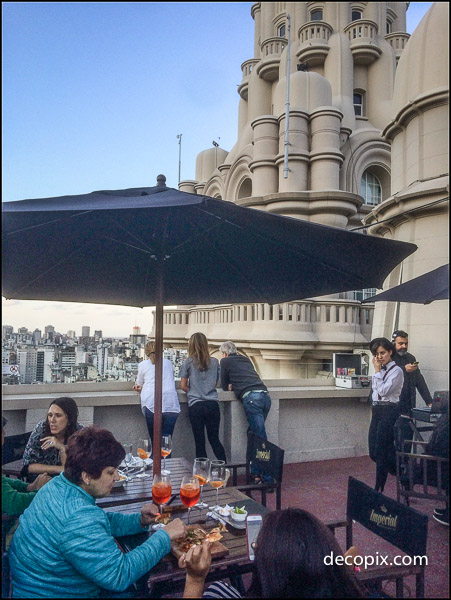
The very nice bar atop the Palacio Borolo.
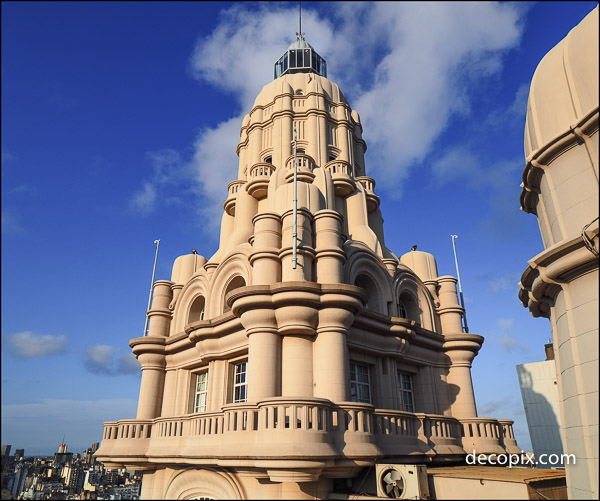
Roof, Palacio Borolo. More proof that nothing is impossible.
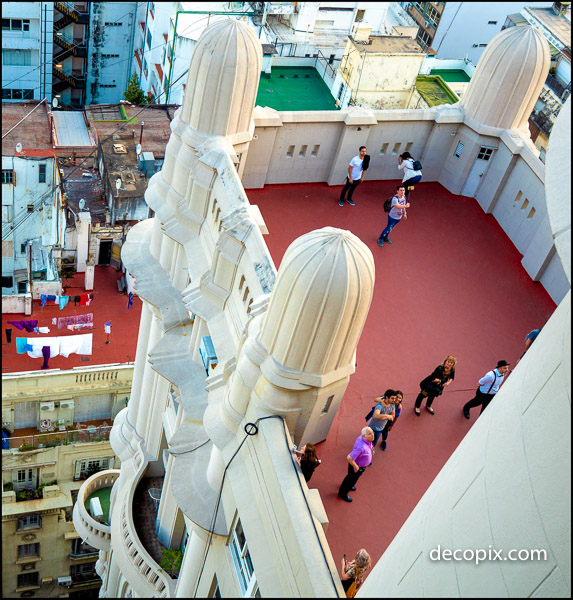
The building tour seen from above.
The stairs where so beautiful, I considered walking back down.
On second thought….
Avenida Corrientes. Av. Corrientes is the city’s 42nd Street, with large theaters on either side. I didn’t spend much time here, due to all the obstructions in front of the buildings.
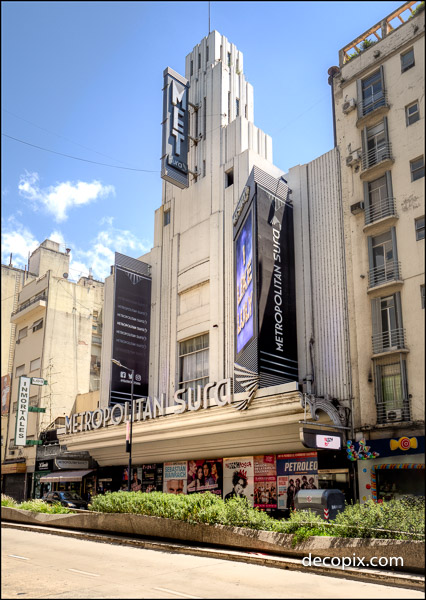
Teatro Metropolitan
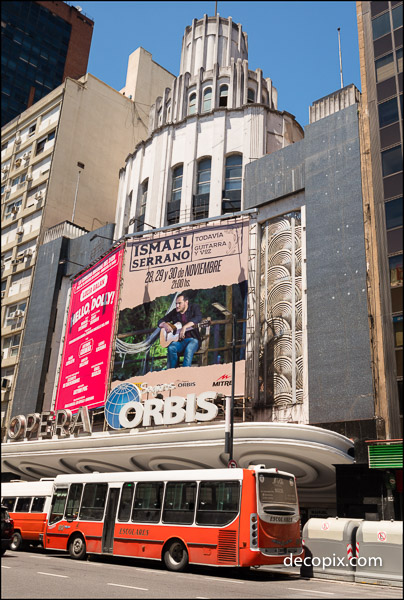
Teatro Opera

Close-up of Teatro Opera. These swirls are made with thousands of tiny silver mosiac tiles.
The largest and most refined of the cinemas is the Gran Rex.
The work of Julian Garcia Nunez. Even in place like Buenos Aires, the work of some architects stands out as having a unique take on currently popular styles and themes. With it’s mix of organic and blocky, geometric motifs, Nunez’ work reminded me a bit of Frank Lloyd Wright.
It appears Nunez influenced others as well, with these cute little buildings.
Art Deco. And this modernistic take on things brings us (at last!) to Art Deco.
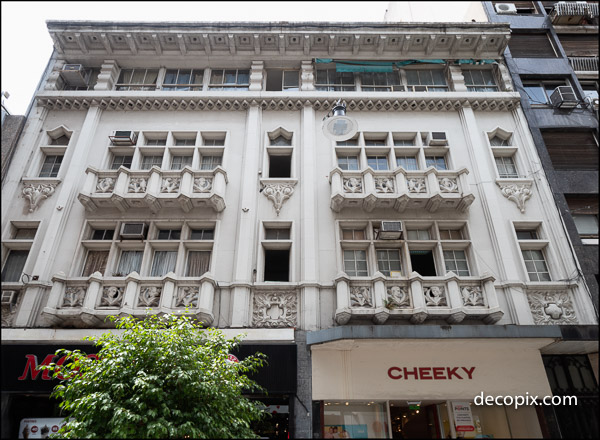
You’ll find this one on the main shopping thoroughfare, Calle Florida.
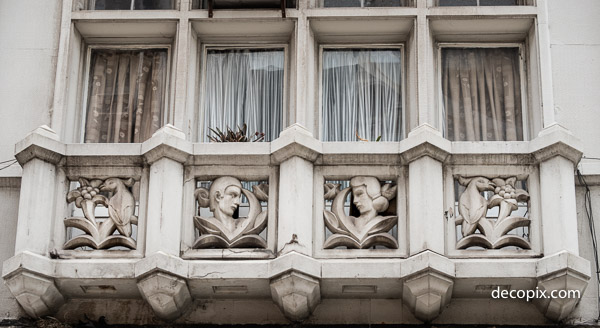
Alas, a very gray day, but you get the idea.
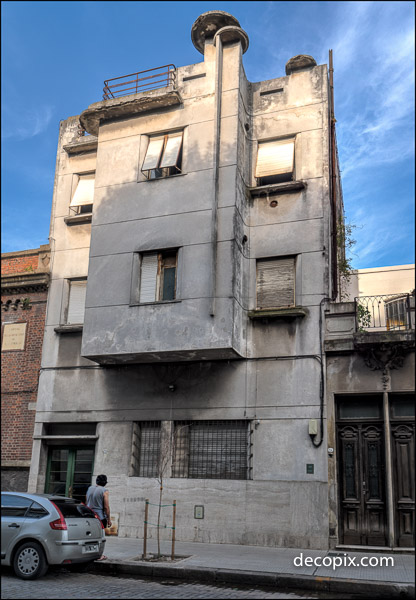
We found this modest example on a side street.
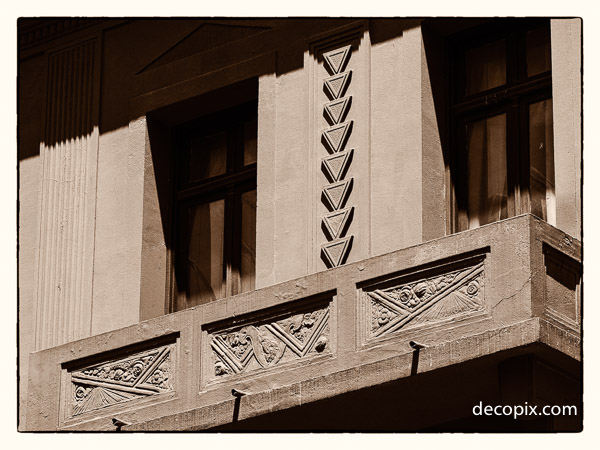
More inverted triangles. This looked nicer in black and white.
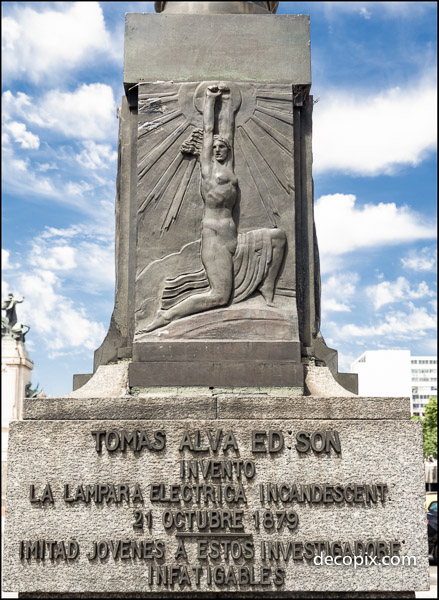
Thomas Edison Memorial
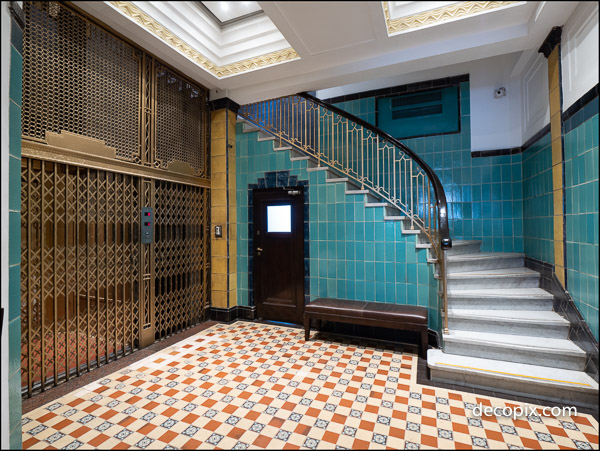
A resident let us in to see this beautifully preserved apartment building lobby.
If you go to see Palacio Borolo, one of the best Art Deco examples is just across the street. This was the newspaper El Diario Criteca but is now used by the police department.
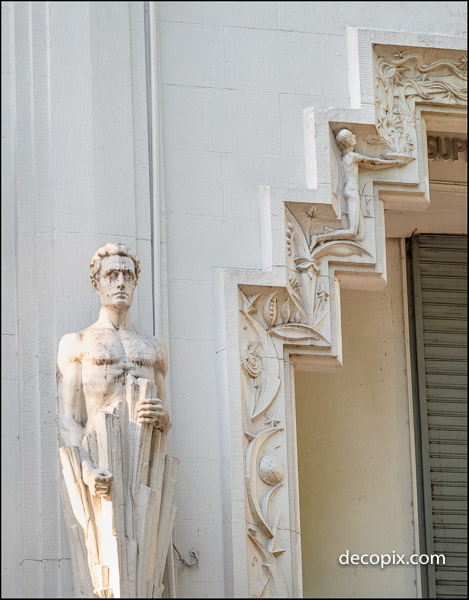
Detail, El Diario Critica Building
The second most famous building, after Palacio Borolo, and for many years the tallest in Latin America is the Kavanaugh Building, a sort of Streamline Moderne “Flatiron”.
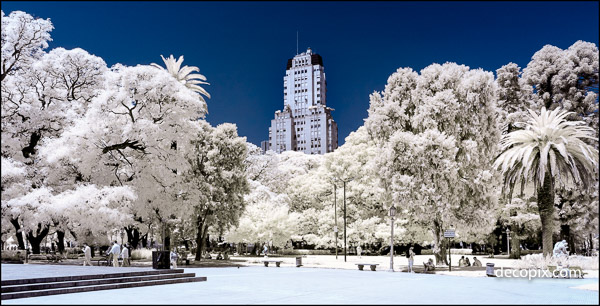
Spring in Buenos Aires!
Now a performing arts center, Teatro Empire was orignally a union meeting hall.
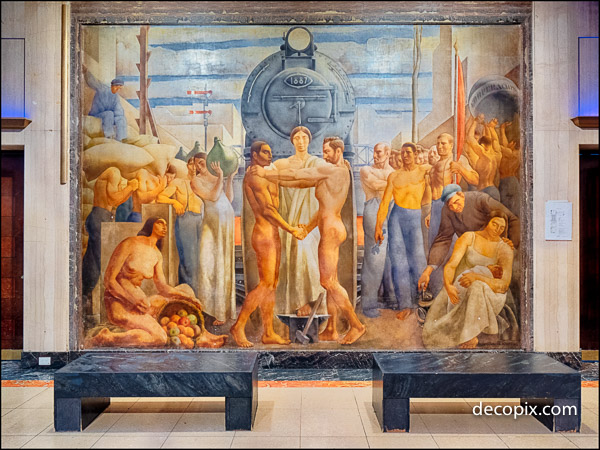
This mural depicts members of two labor unions agreeing to work together. The garment workers union was apparently not a party to this negotiation.
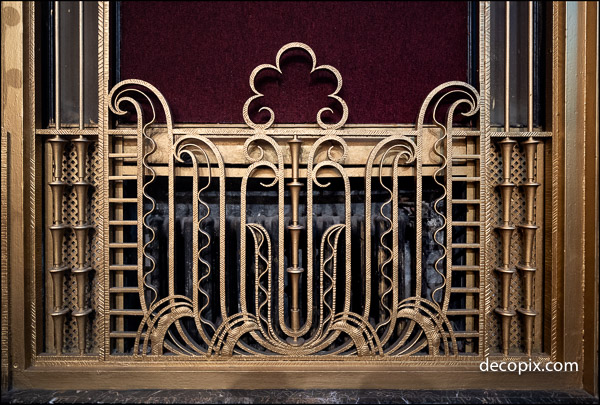
Radiator grille, Teatro Empire
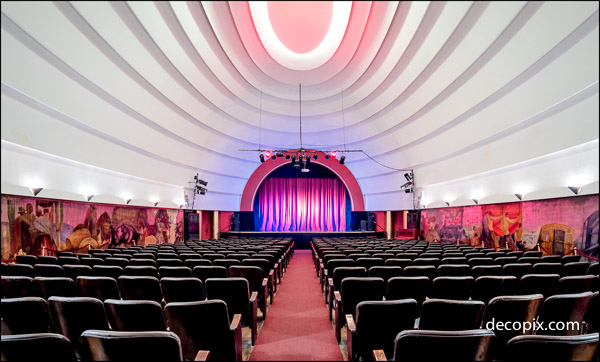
The auditorium, which can change color (naturally) is said to be inspired by Radio City.

Murals on the left depict the old Argentina.

And on the right…the new.
All the photos in the post were made in 4-1/2 days, so this is just scratching the surface. For those with an interest in Art Deco, I would reccomend a side trip to nearby Montivideo, which has hundreds of Art Deco and Streamline Moderne buildings and will be the subject of a future post.
I’ll end with my favorite from Buenos Aires. As you may know, I’m partial to small, obscure Art Deco buildings, and we found a great one:

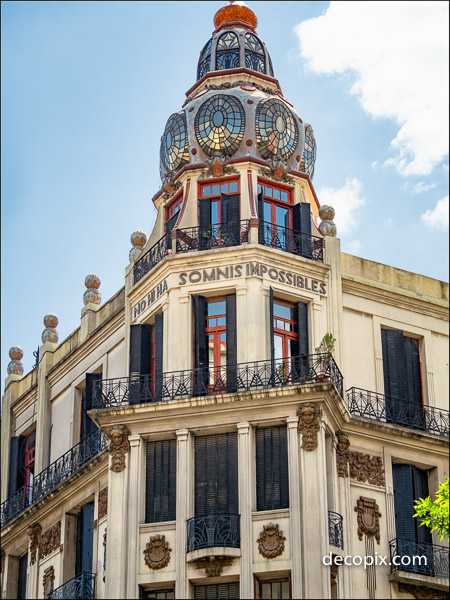
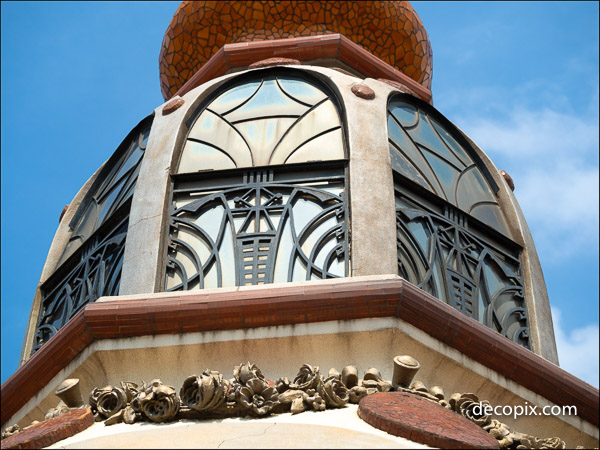
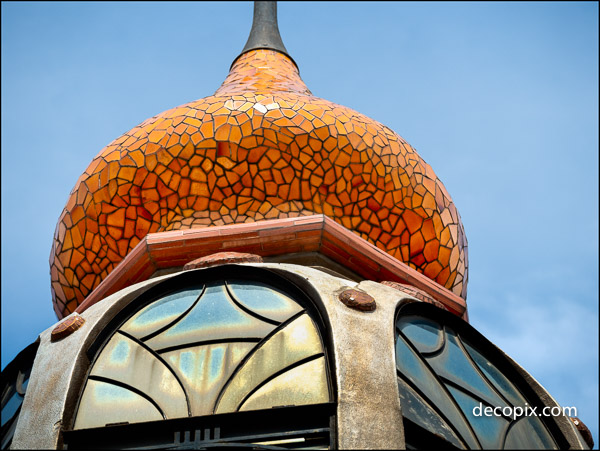
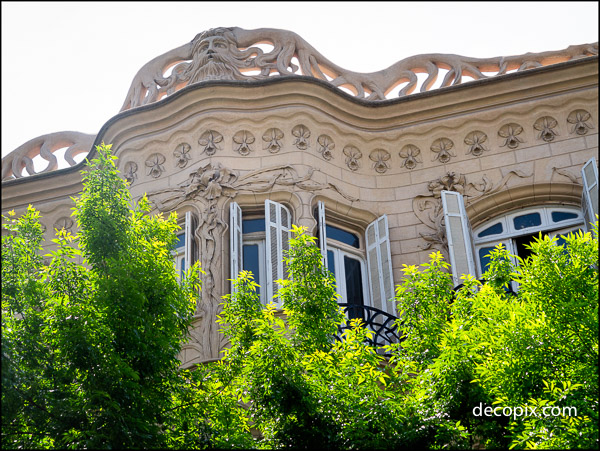
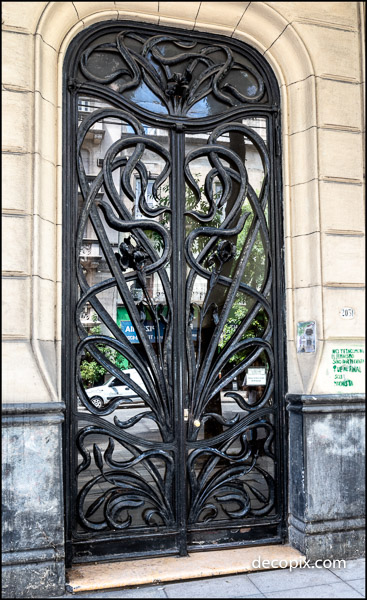
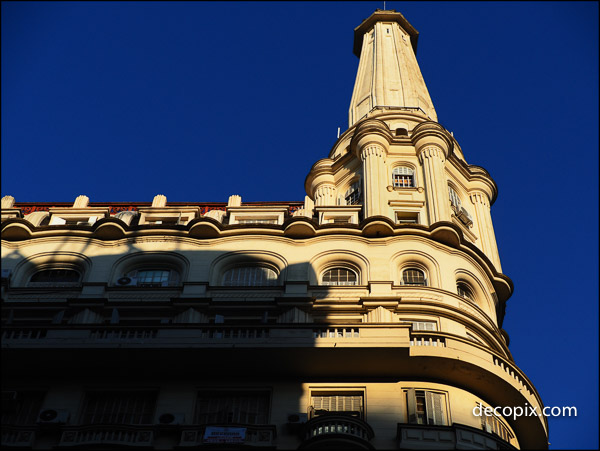
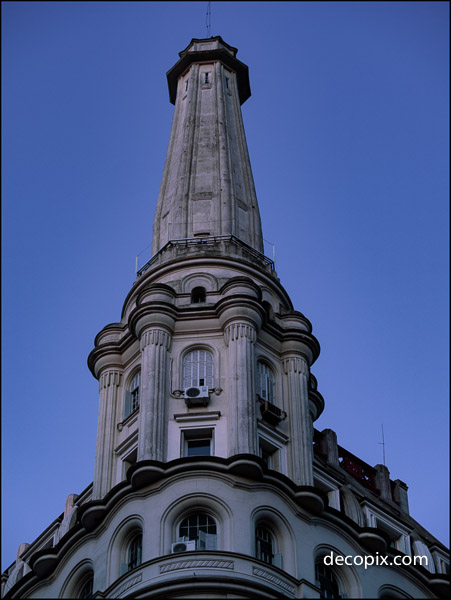
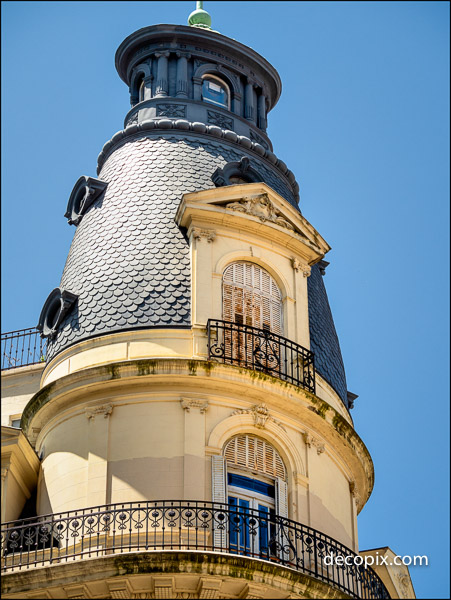
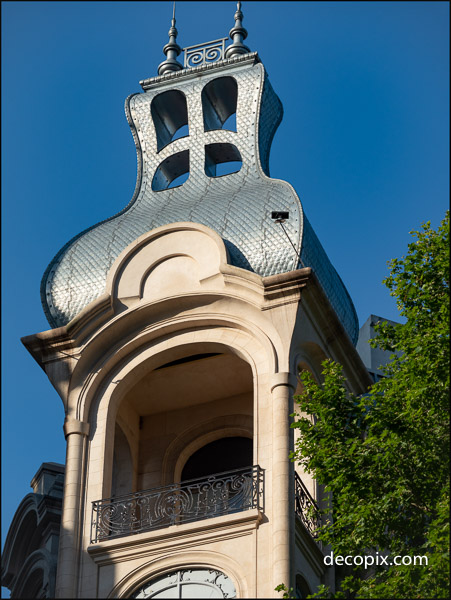
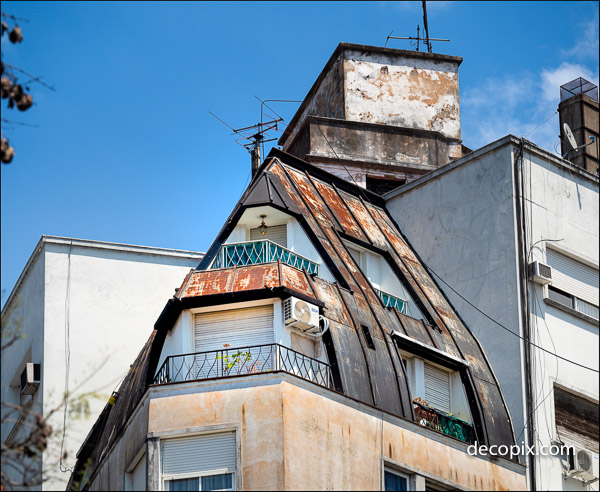
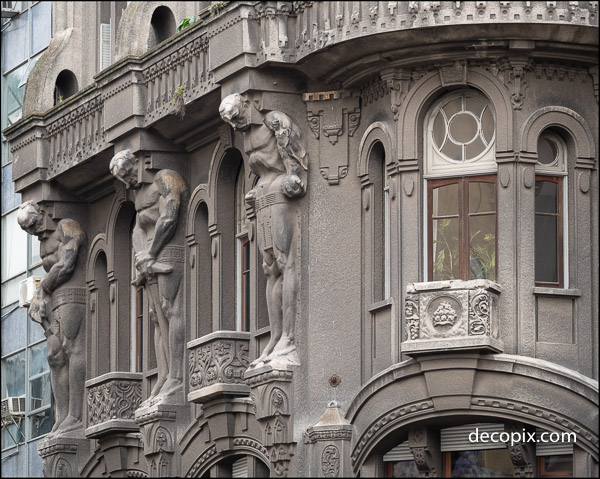
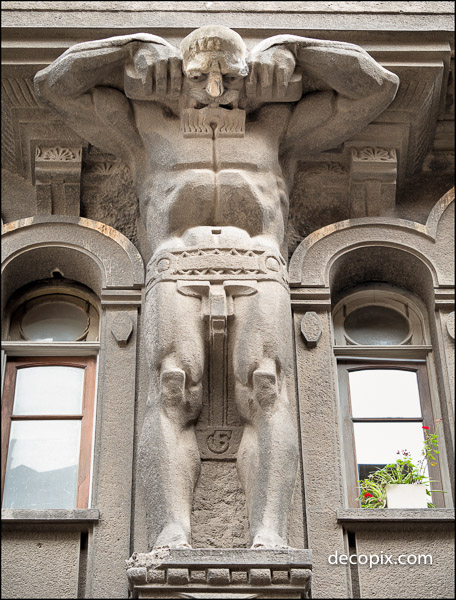
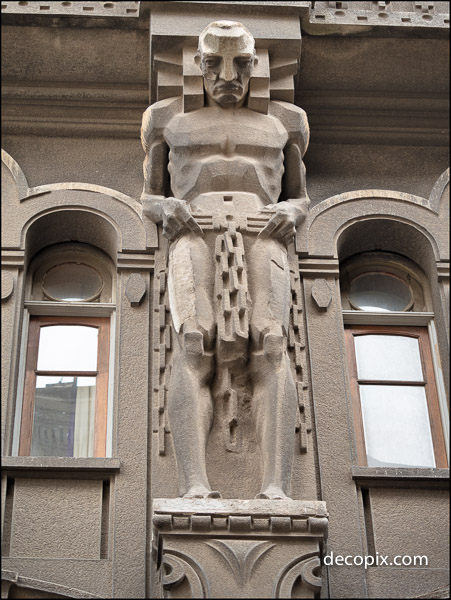
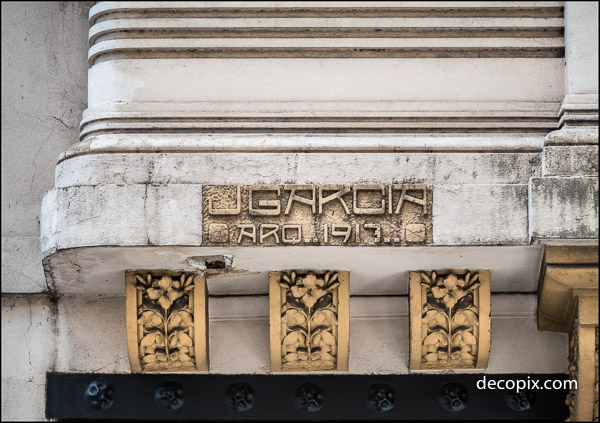
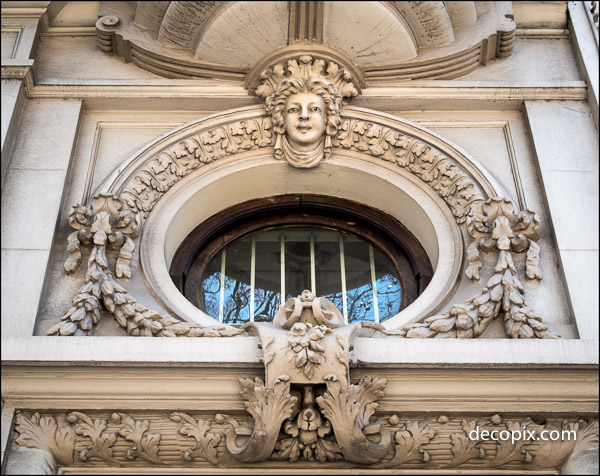
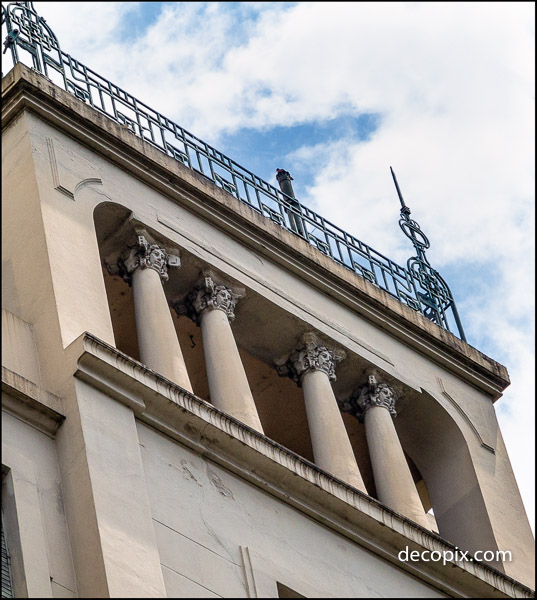
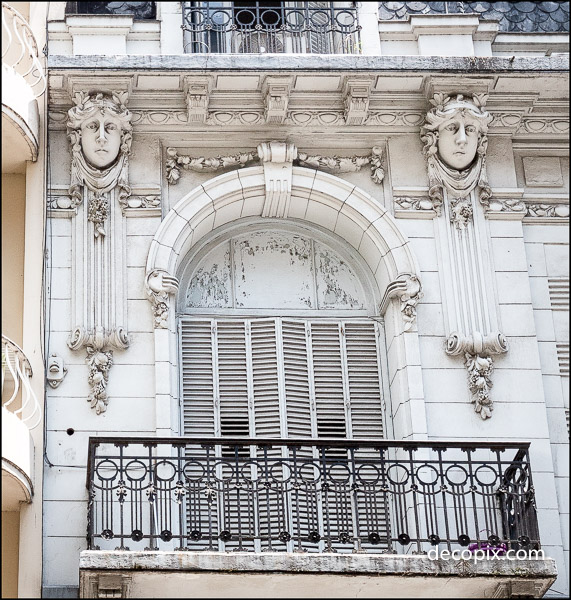
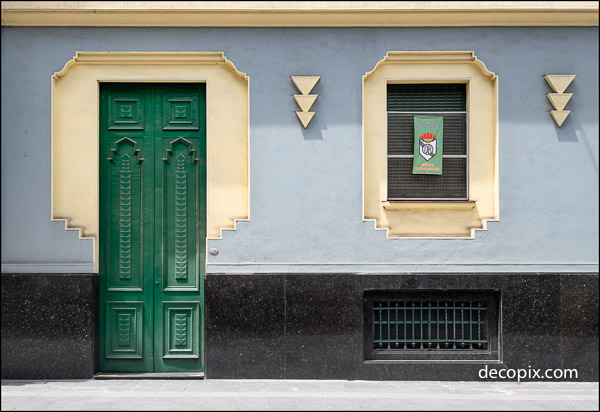
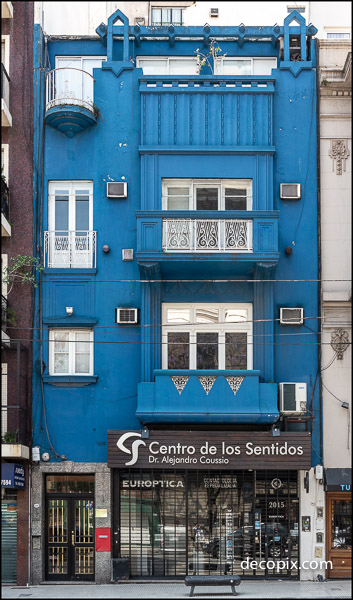
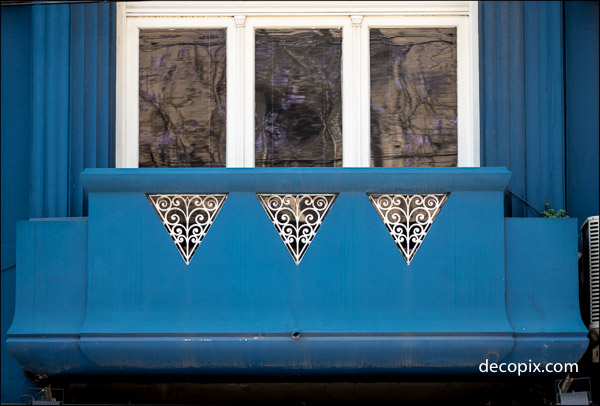
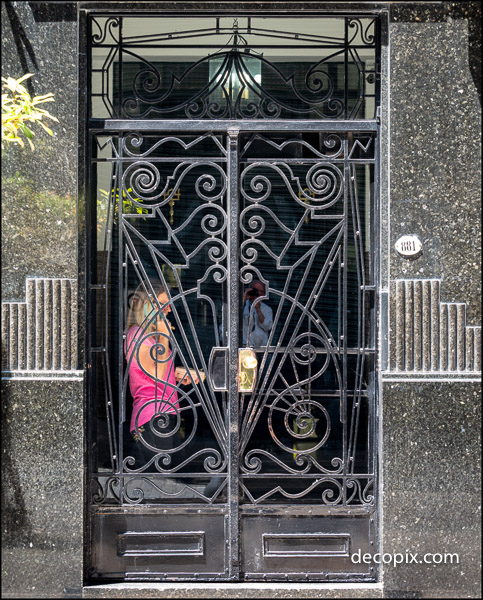

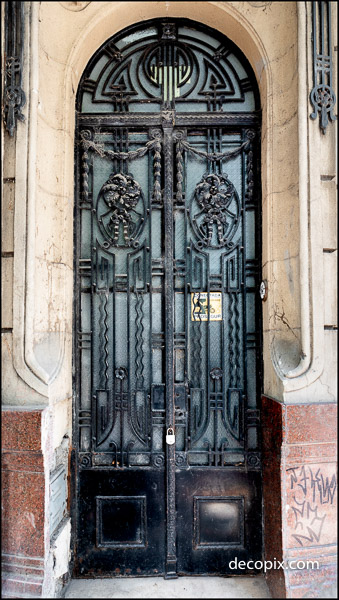
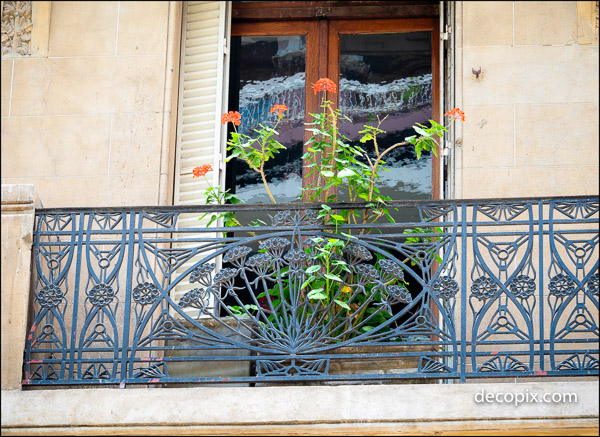
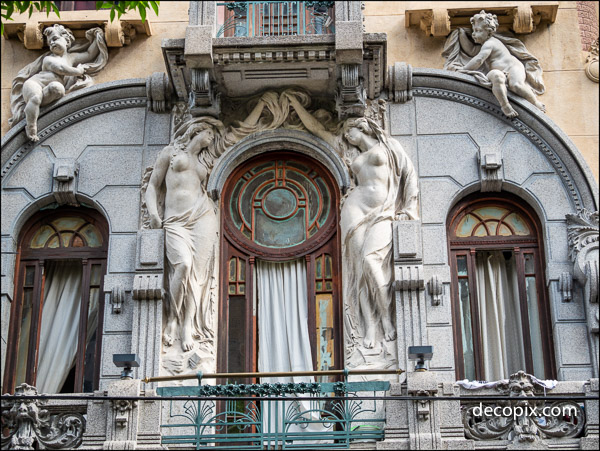
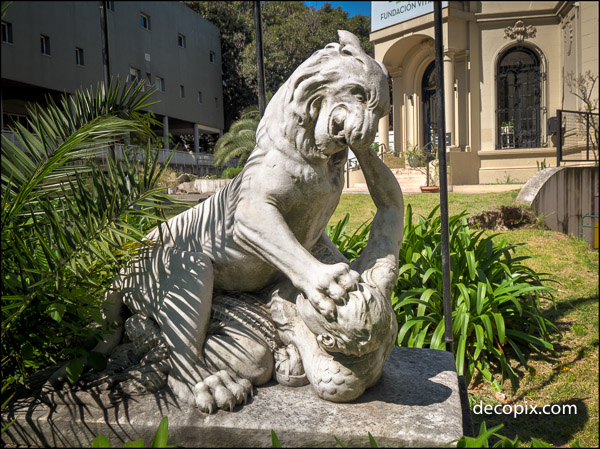
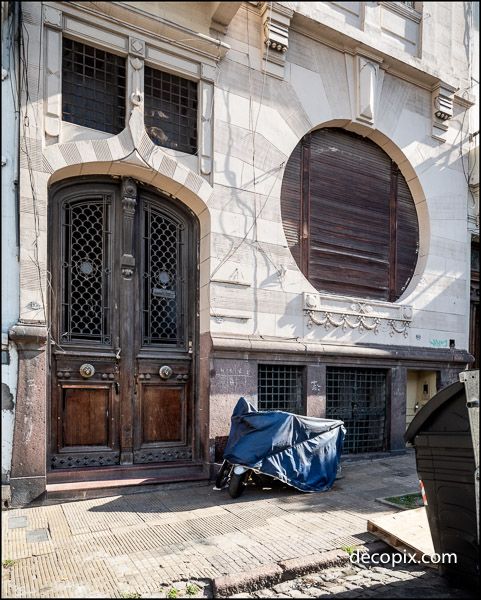
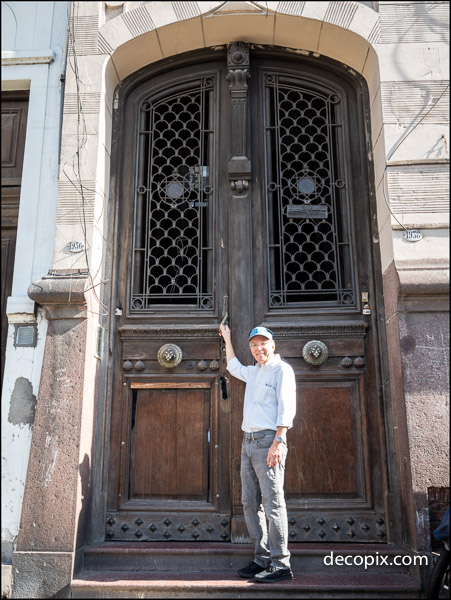
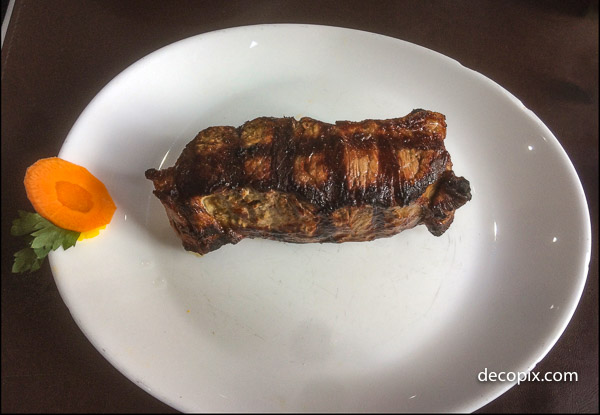
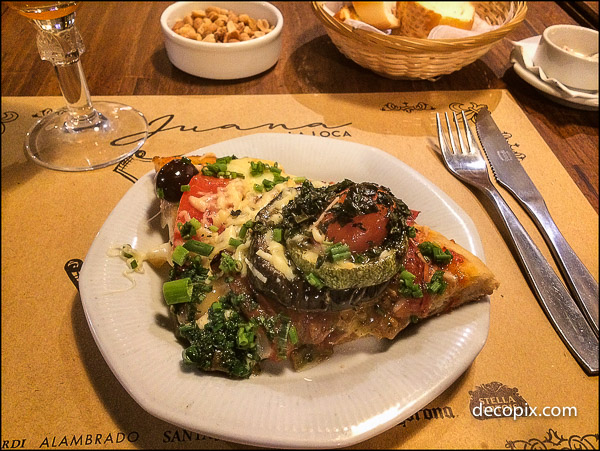
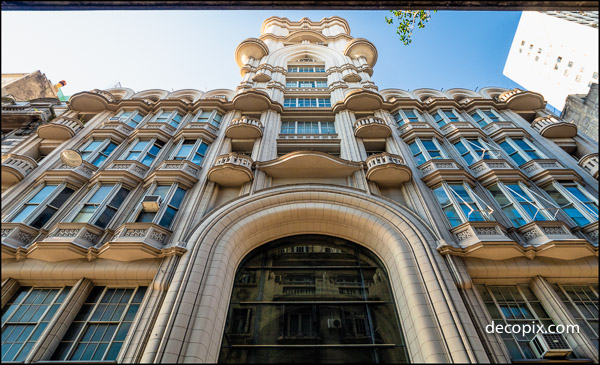
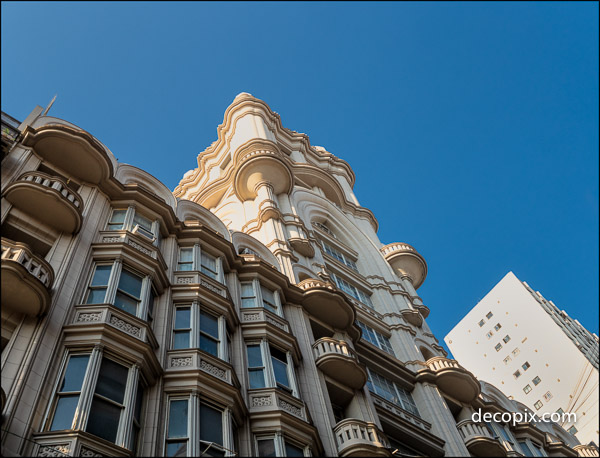
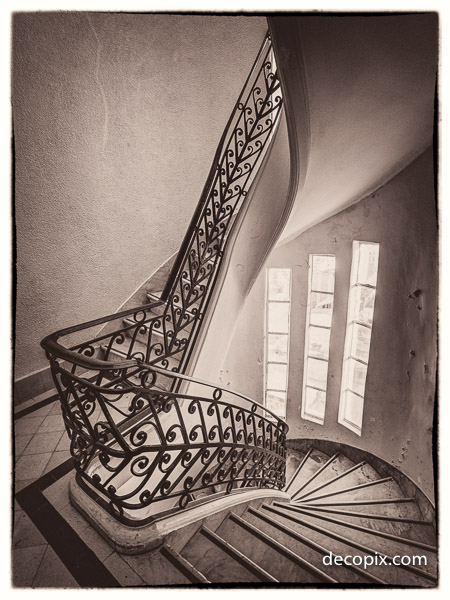
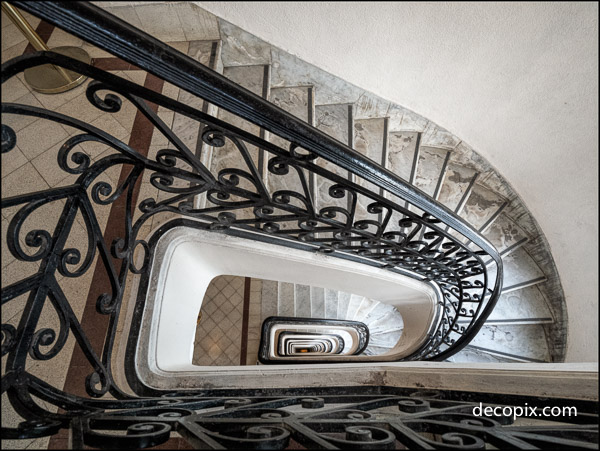
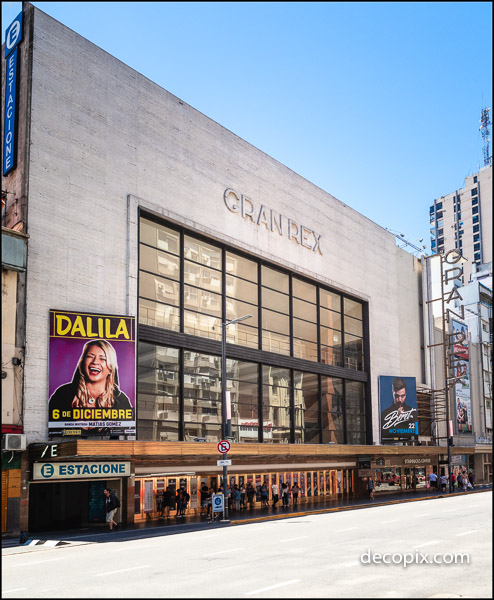
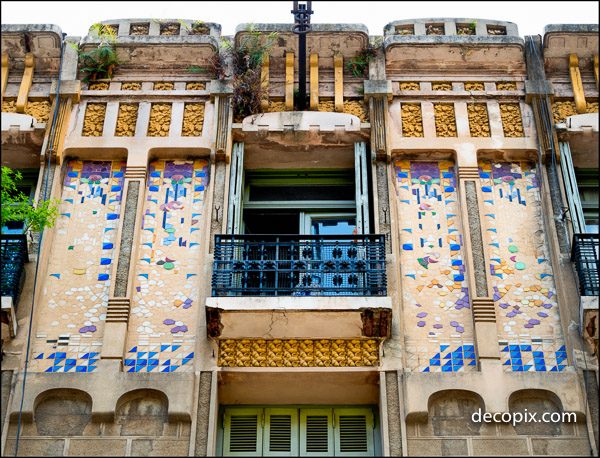
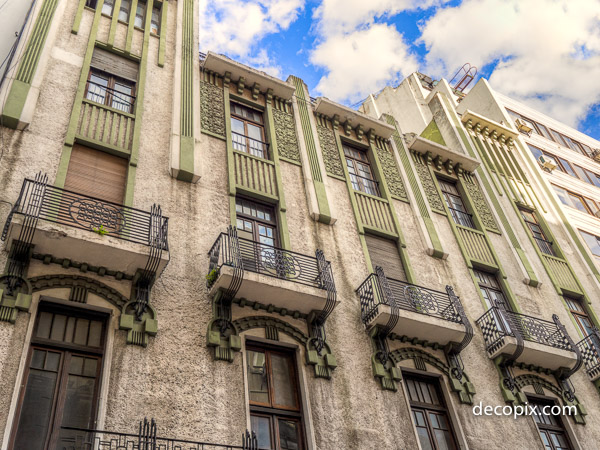
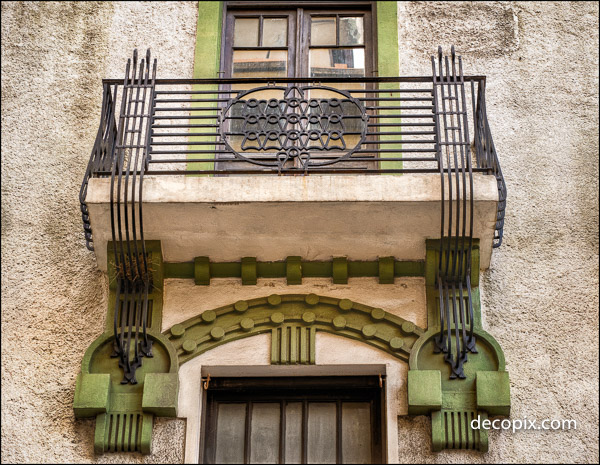
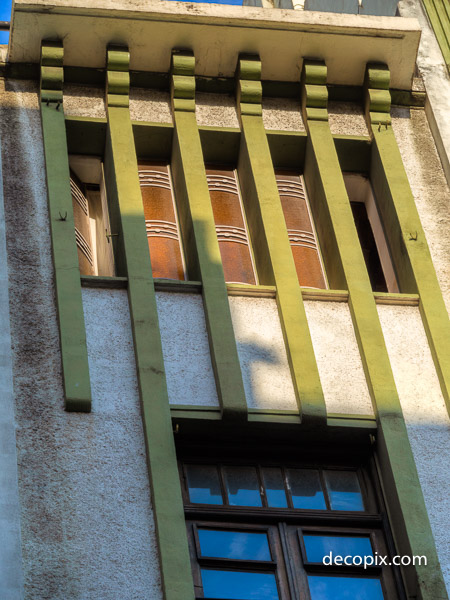
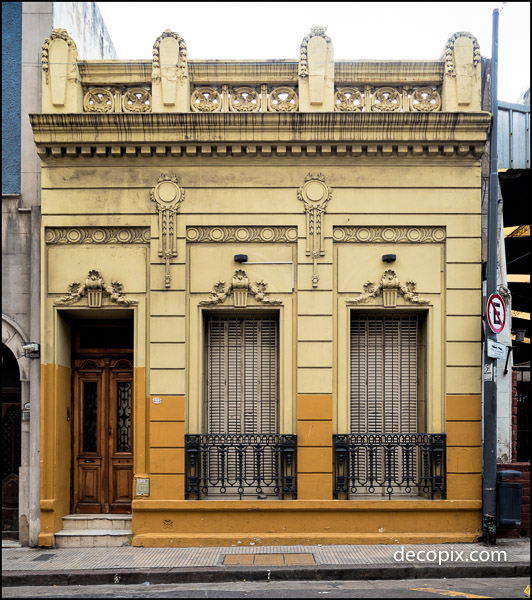
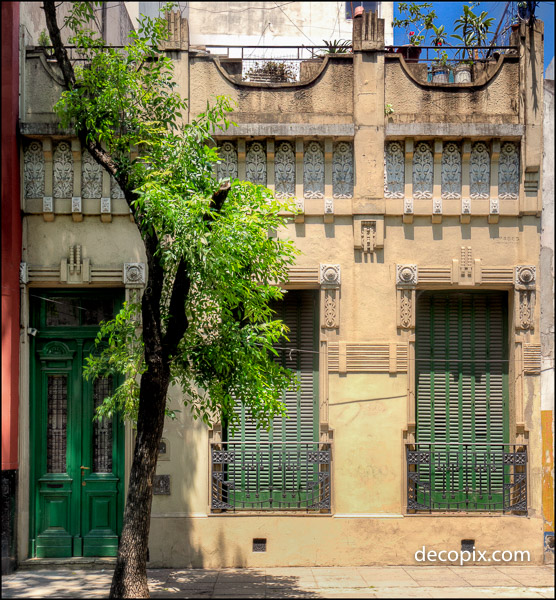
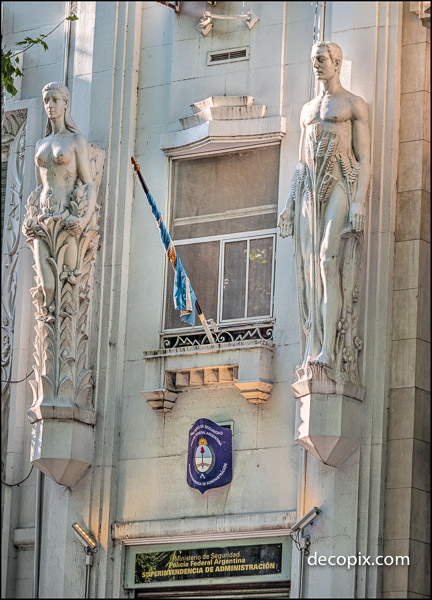
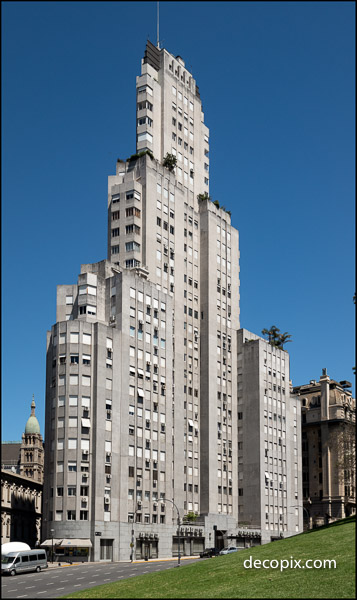
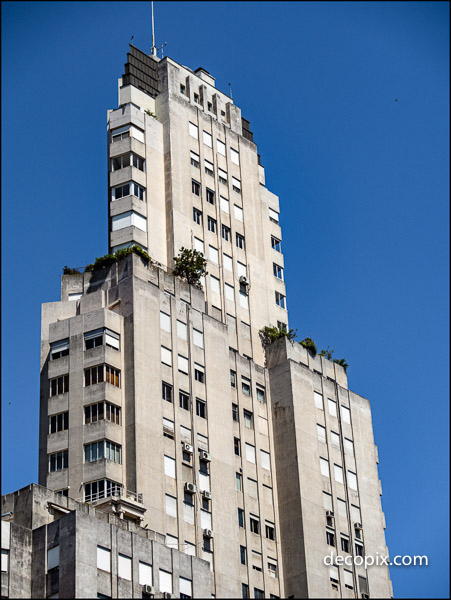
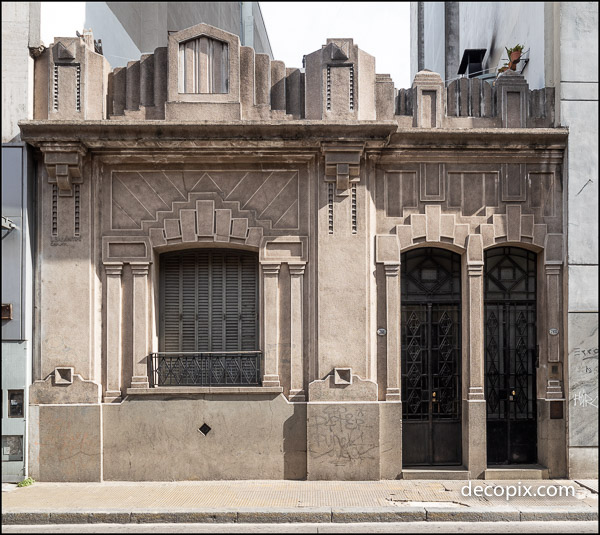
Great stuff, Randy. Look forward to your MV article. Best Robin & Robyn
Thanks Robin & Robyn! Hope all is well in your part of the world.
I revisited your Buenos Aires post this evening. It is amazing, The metal and ironwork on doors, balconies and railings are beyond comparison! Thanks again.
Hi Bruce – Be sure to check out the post on Montivideo. A bit different from Buenos Aires but ohmygosh, the Art Deco.
That iron dragon is a replica of the gate at Güell Pavillions in Barcelona.
Thank you! Of course, I should have realized this! I will update the post.